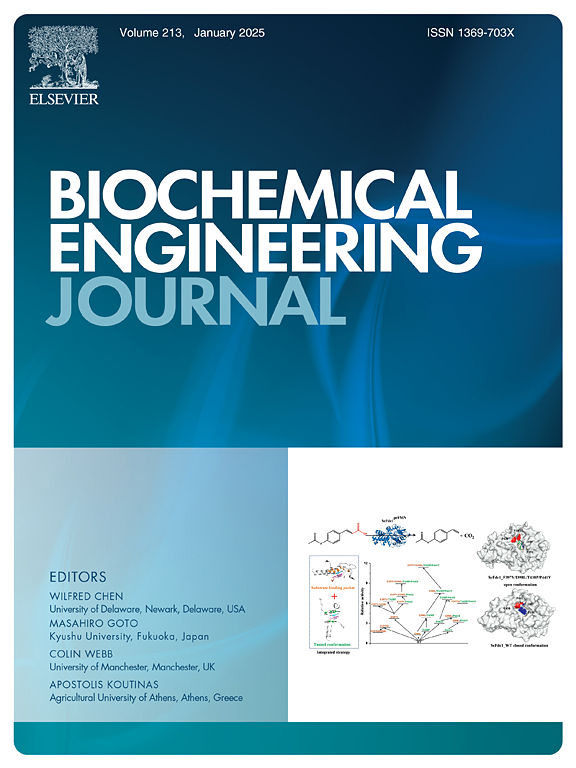Improving composting quality and optimizing bacterial community: A study on the effects of bamboo sphere, vermiculite, and sponge iron in cattle manure composting
IF 3.7
3区 生物学
Q2 BIOTECHNOLOGY & APPLIED MICROBIOLOGY
引用次数: 0
Abstract
Composting represents a widely adopted approach for managing cattle manure, yet conventional approaches often suffer from inefficient decomposition rates and suboptimal product quality. This study systematically investigated the optimization of aerobic composting processes using cattle manure and rice straw as primary substrates, supplemented with three distinct additives: hollow bamboo spheres, vermiculite, and sponge iron. Through integrated monitoring of physicochemical evolution and microbial community dynamics, this study evaluated the differential efficacy of these additives in enhancing composting performance. Key findings revealed that vermiculite treatment achieved superior humification levels, concurrently facilitating substantial stabilization of heavy metals, particularly Zn (31.59 % conversion rate to stable fractions) and Cr (60.49 % conversion rate to stable fractions). These effects correlated strongly with the enrichment of Firmicutes. Redundancy analysis indicated electrical conductivity (EC) as the dominant driver of bacterial community restructuring after the thermophilic stage. While the morphological transformation of Zn and Cr showed significant associations with humic substances, the speciation distribution of Cu exhibited stronger linkages to bacterial community structure. Correlation analysis indicated that most Firmicutes played a crucial role in organic matter degradation and humic substance synthesis, whereas Pseudomonas demonstrated nitrogen conservation capability. This work provides theoretical foundations and practical insights for the resource utilization and harmless treatment of cattle manure.
竹球、蛭石和海绵铁在牛粪堆肥中的作用研究
堆肥是一种广泛采用的管理牛粪的方法,但传统的方法往往存在分解效率低下和产品质量欠佳的问题。本研究系统地研究了以牛粪和稻草为主要基质,添加空心竹球、蛭石和海绵铁三种不同添加剂的好氧堆肥工艺优化。本研究通过综合监测理化演变和微生物群落动态,评价了不同添加剂在提高堆肥性能方面的差异效果。主要研究结果表明,蛭石处理获得了优异的腐殖化水平,同时促进了重金属的大量稳定,特别是Zn(31.59 %转化率为稳定馏分)和Cr(60.49 %转化率为稳定馏分)。这些效应与厚壁菌门的富集密切相关。冗余分析表明,电导率(EC)是嗜热阶段后细菌群落重组的主要驱动因素。Zn和Cr的形态转化与腐殖质有显著的关联,而Cu的物种分布与细菌群落结构的关联更强。相关分析表明,大多数厚壁菌门在有机物降解和腐殖质合成中起关键作用,而假单胞菌具有氮保存能力。本研究为牛粪资源化利用和无害化处理提供了理论基础和实践见解。
本文章由计算机程序翻译,如有差异,请以英文原文为准。
求助全文
约1分钟内获得全文
求助全文
来源期刊

Biochemical Engineering Journal
工程技术-工程:化工
CiteScore
7.10
自引率
5.10%
发文量
380
审稿时长
34 days
期刊介绍:
The Biochemical Engineering Journal aims to promote progress in the crucial chemical engineering aspects of the development of biological processes associated with everything from raw materials preparation to product recovery relevant to industries as diverse as medical/healthcare, industrial biotechnology, and environmental biotechnology.
The Journal welcomes full length original research papers, short communications, and review papers* in the following research fields:
Biocatalysis (enzyme or microbial) and biotransformations, including immobilized biocatalyst preparation and kinetics
Biosensors and Biodevices including biofabrication and novel fuel cell development
Bioseparations including scale-up and protein refolding/renaturation
Environmental Bioengineering including bioconversion, bioremediation, and microbial fuel cells
Bioreactor Systems including characterization, optimization and scale-up
Bioresources and Biorefinery Engineering including biomass conversion, biofuels, bioenergy, and optimization
Industrial Biotechnology including specialty chemicals, platform chemicals and neutraceuticals
Biomaterials and Tissue Engineering including bioartificial organs, cell encapsulation, and controlled release
Cell Culture Engineering (plant, animal or insect cells) including viral vectors, monoclonal antibodies, recombinant proteins, vaccines, and secondary metabolites
Cell Therapies and Stem Cells including pluripotent, mesenchymal and hematopoietic stem cells; immunotherapies; tissue-specific differentiation; and cryopreservation
Metabolic Engineering, Systems and Synthetic Biology including OMICS, bioinformatics, in silico biology, and metabolic flux analysis
Protein Engineering including enzyme engineering and directed evolution.
 求助内容:
求助内容: 应助结果提醒方式:
应助结果提醒方式:


